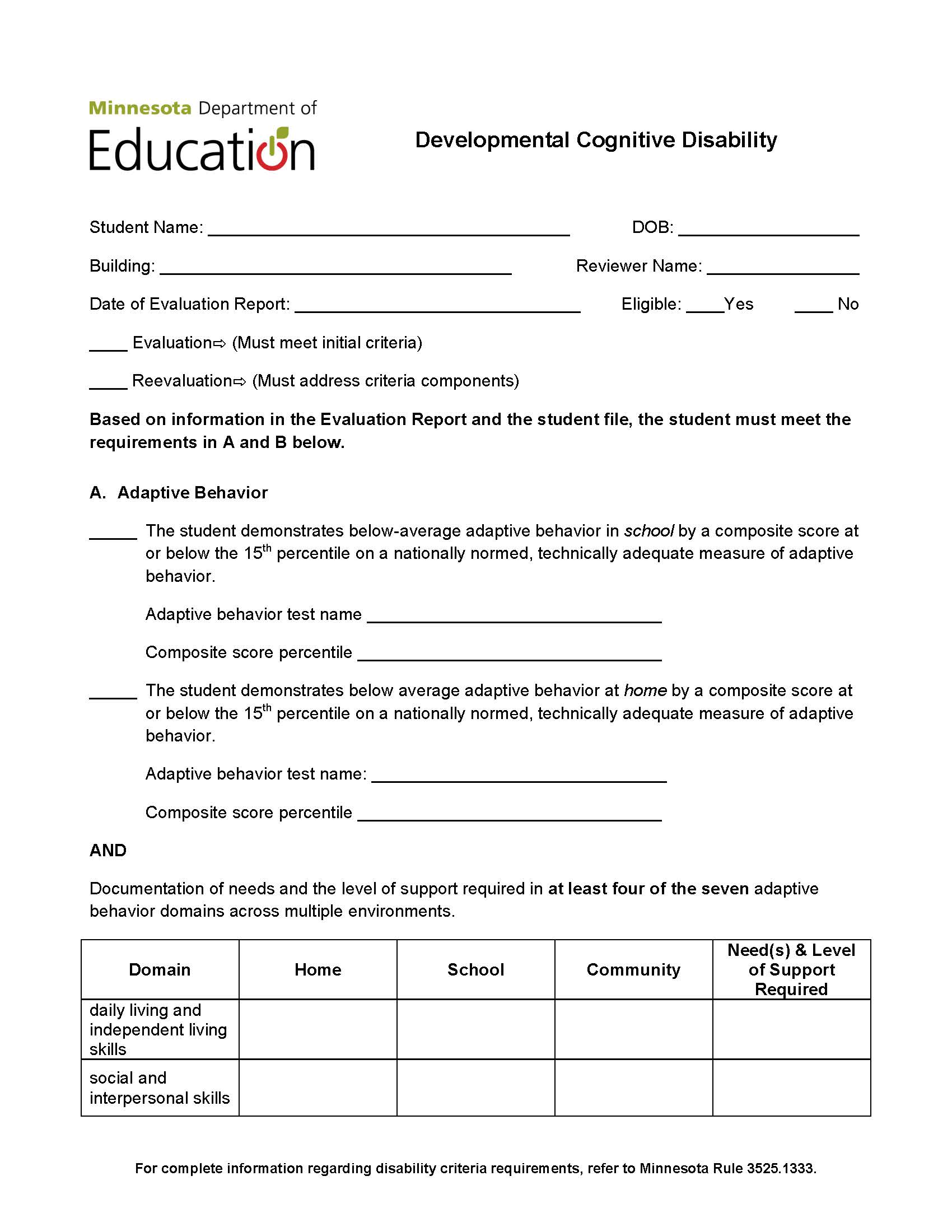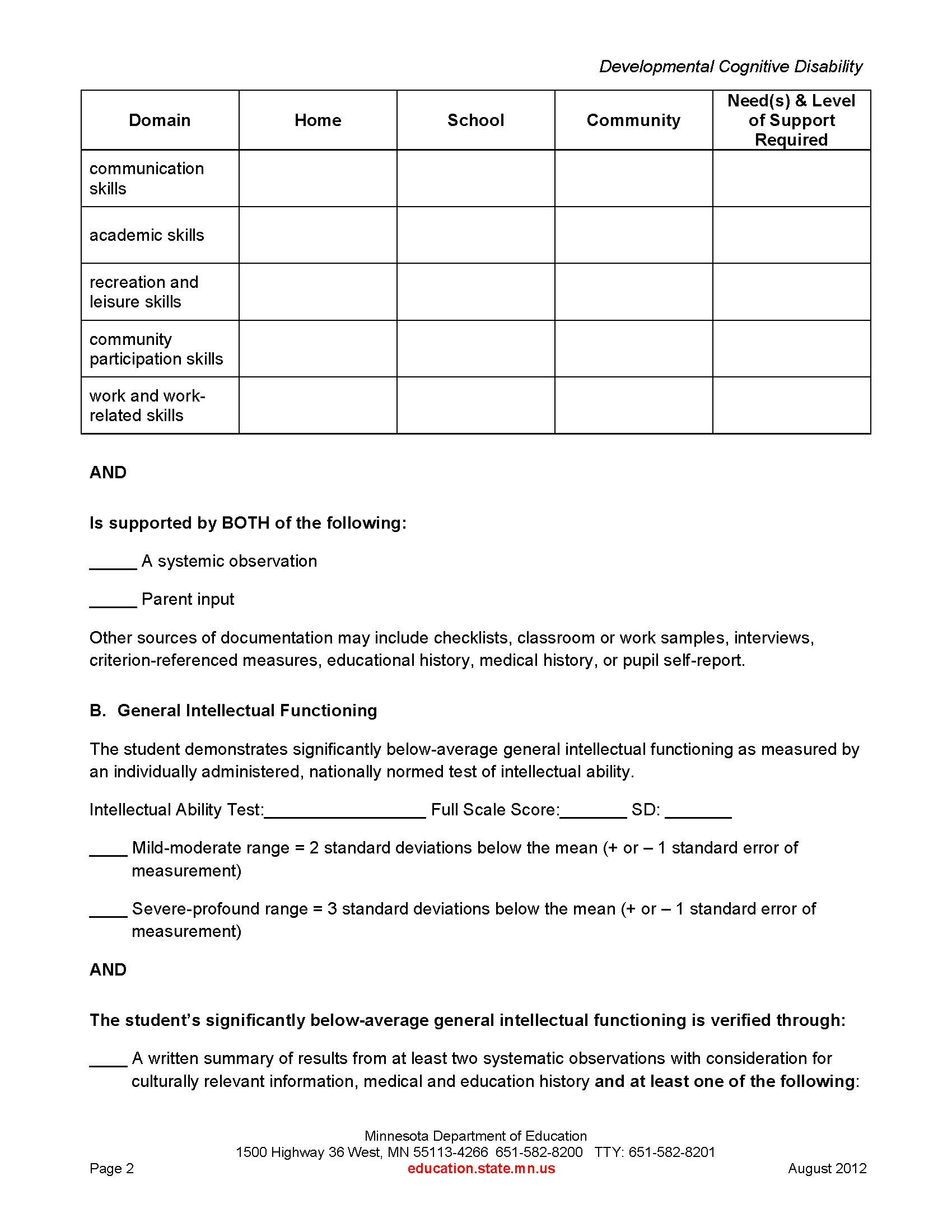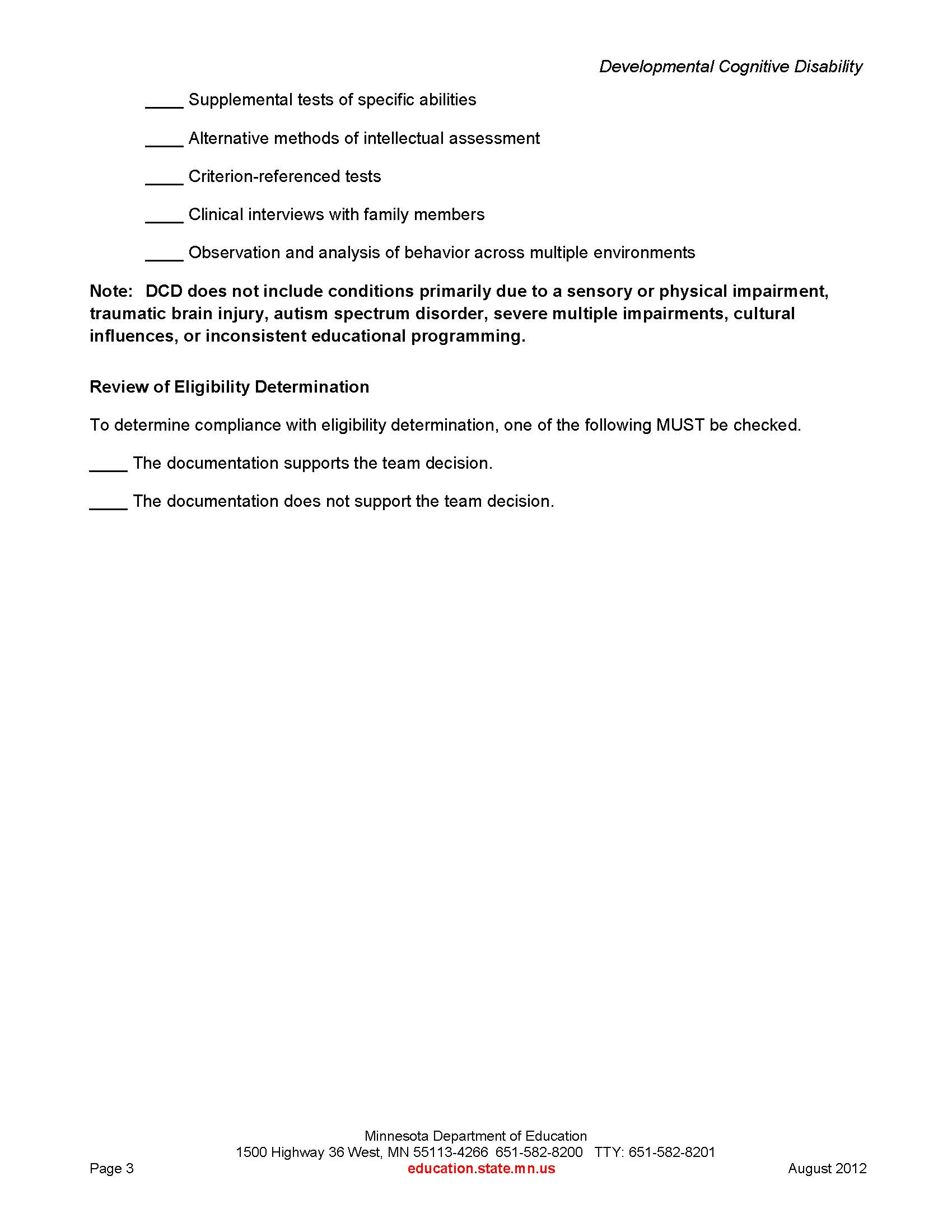
Intellectual Disability
Disability Label & Prevalence |
Definition |
General Characteristics |
Identification & Assessment |
Educational Approaches |
Educational Placement Alternatives |
Intellectual Disability 1% of General Population |
IDEA – Significantly sub average general intellectual functioning, existing concurrently with deficits in adaptive behavior and manifested during the developmental period, that adversely affects a child’s educational performance. |
Significant limitations in both intellectual functioning and in adaptive behavior as expressed in conceptual, social, and practical adaptive skills.
|
Administration of an intelligence (IQ) test by trained professional and collecting data on adaptive behavior, meaning the collection of conceptual, social, and practical skills that have been learned by people in order to function in their everyday lives. |
Academic Curriculum: should receive basics in math, reading, and writing. Functional Curriculum: practical skills used in everyday life. Self Determination: helps learners set goals, plans steps to achieve goals, chose and implement course of action, evaluate their performance and make adjustments to reach their goals. |
General Classroom Resource Room Program Separate Classrooms Separate Schools Residential Facilities Or Home/Hospital |
Description of 2 evidence-based strategies |
Behavior Chain Interruption Strategy (BCIS): a parent or a teacher interrupts a student who is engaged in a multistep routine, such as preparing a snack, washing hands, or playing with a toy. The purpose of the interruption is twofold: first, it creates an opportunity to teach the student to make a request for an object or ask for assistance necessary to continue the task. This instruction may take the form of a verbal prompt may also involve a physical prompt when targeting manual signing or pictorial communication systems, and second, the natural desire to complete a task, coupled with the mild distress caused by the interruption, provides powerful motivation for the student to communicate. When the student does make the targeted request, the adult grants the request and encourages the student to continue the activity. (Bayes, 2013) |
Practitioner Based Article related to this area: Include reference and summary of the article. |
While students with intellectual disabilities usually focus on learning functional math, they should also be taught advance math skills which could lead to general improvement in student knowledge and understanding of more complex math skills. For students with moderate intellectual disabilities, acquiring advanced math skills may also increase their ability to function in natural environments. (Rivera & Baker, 2013) |
MN Eligibility Checklist


